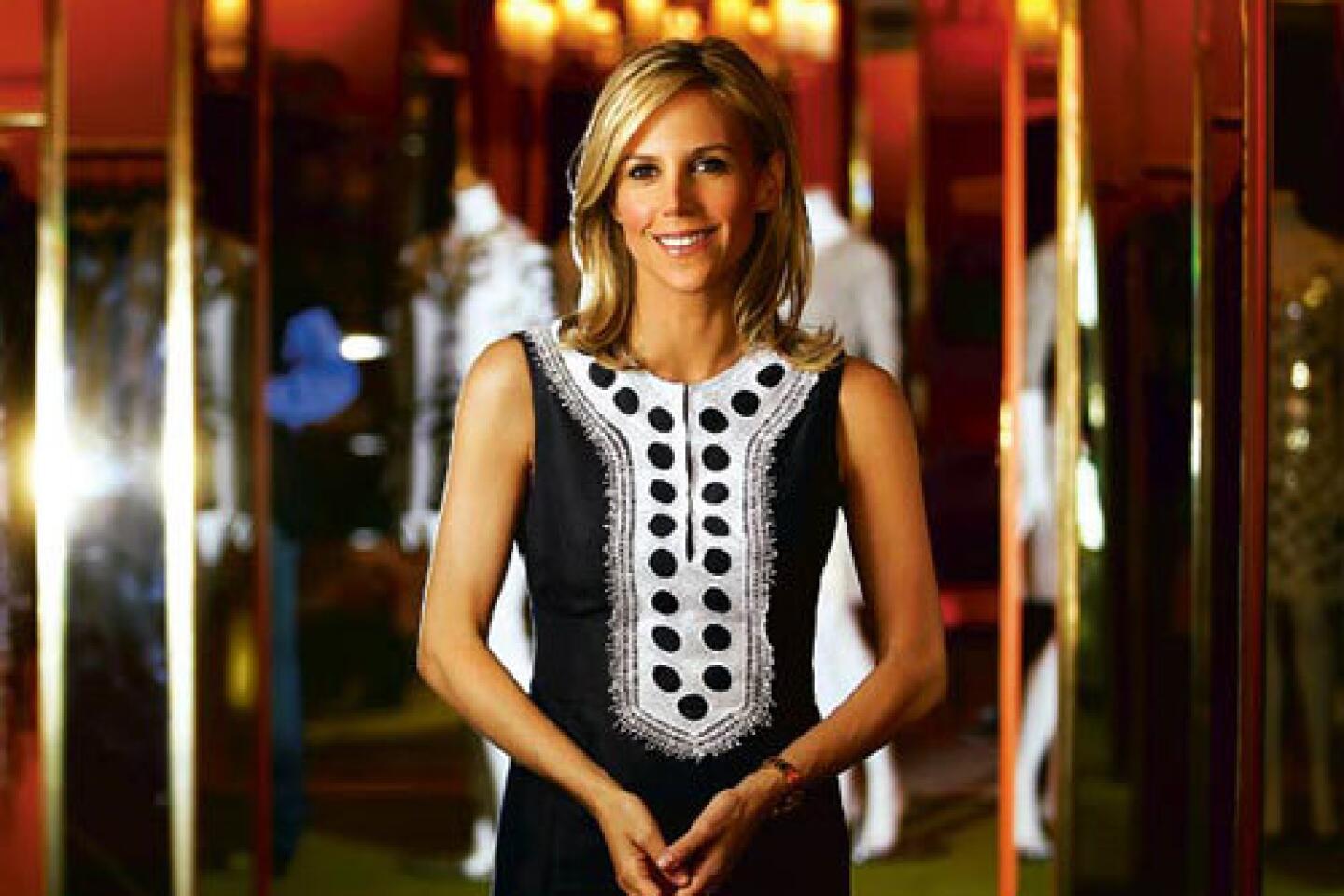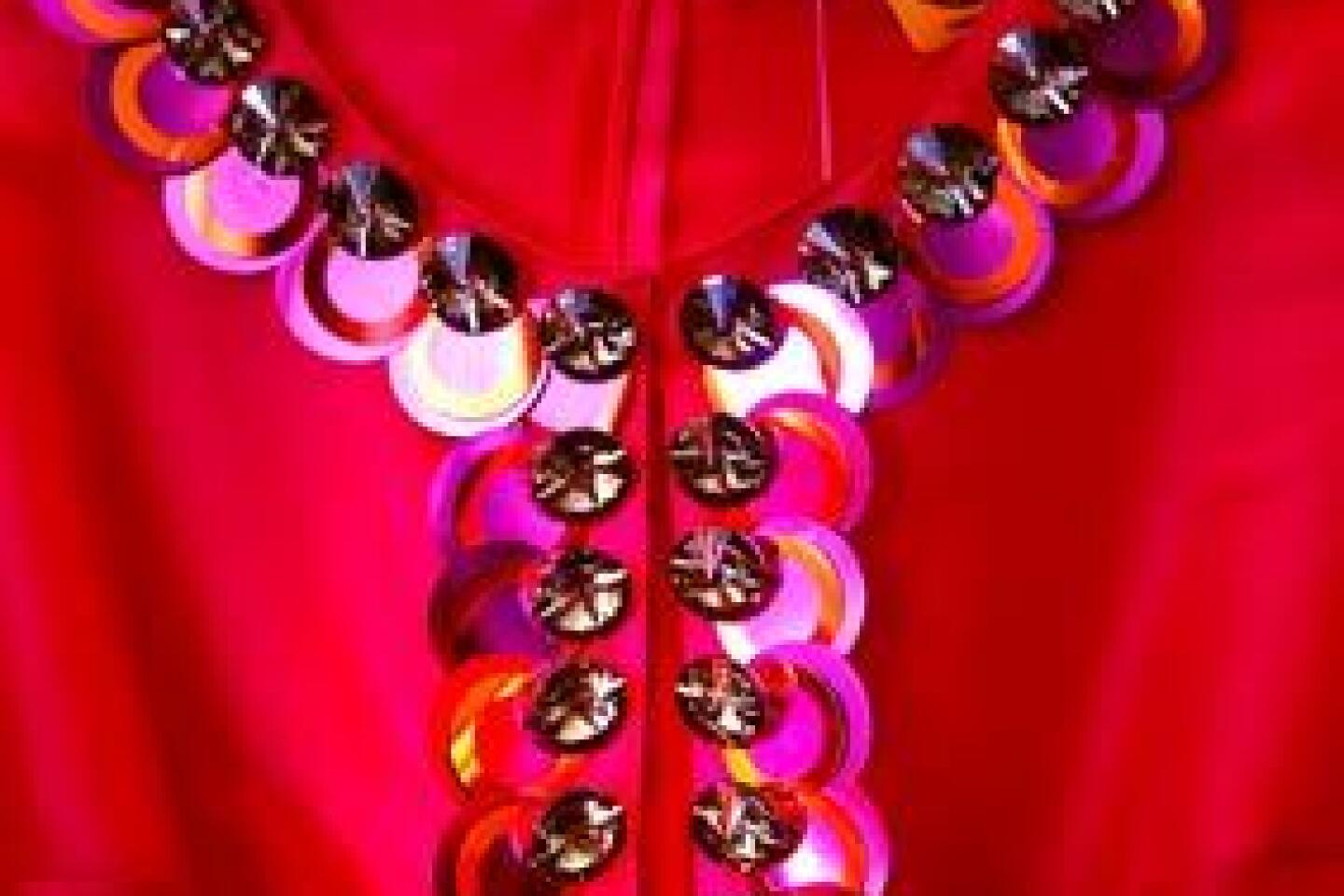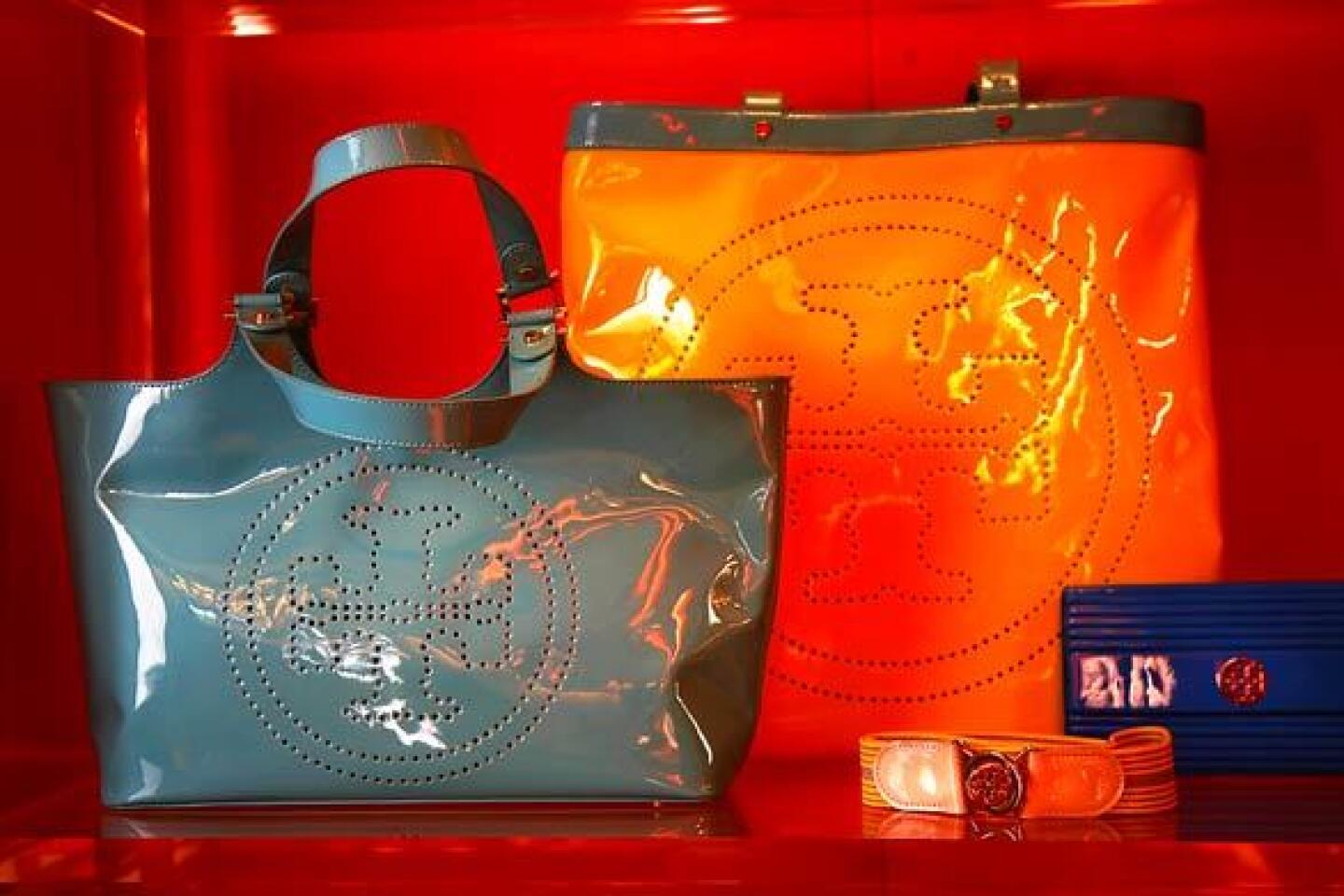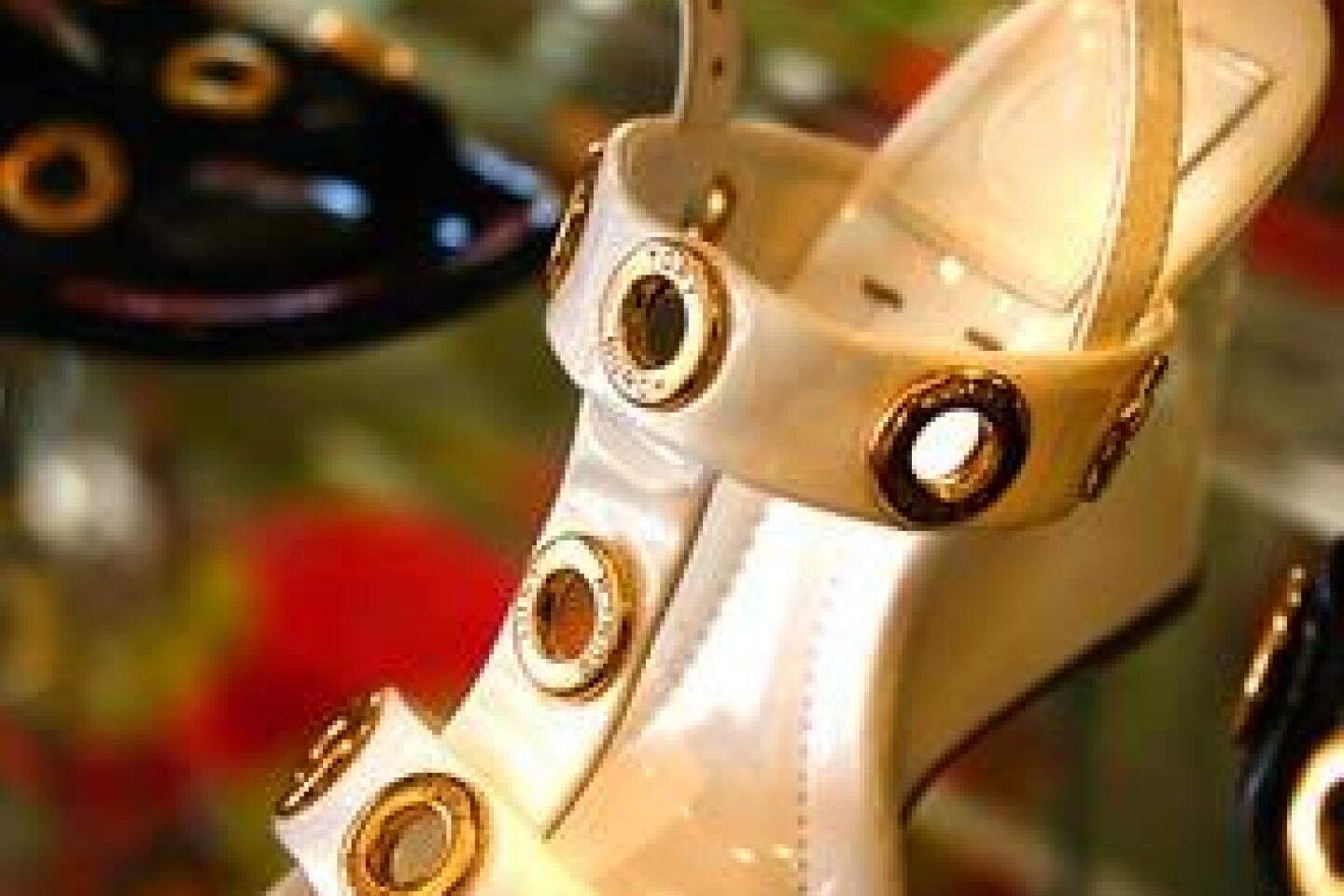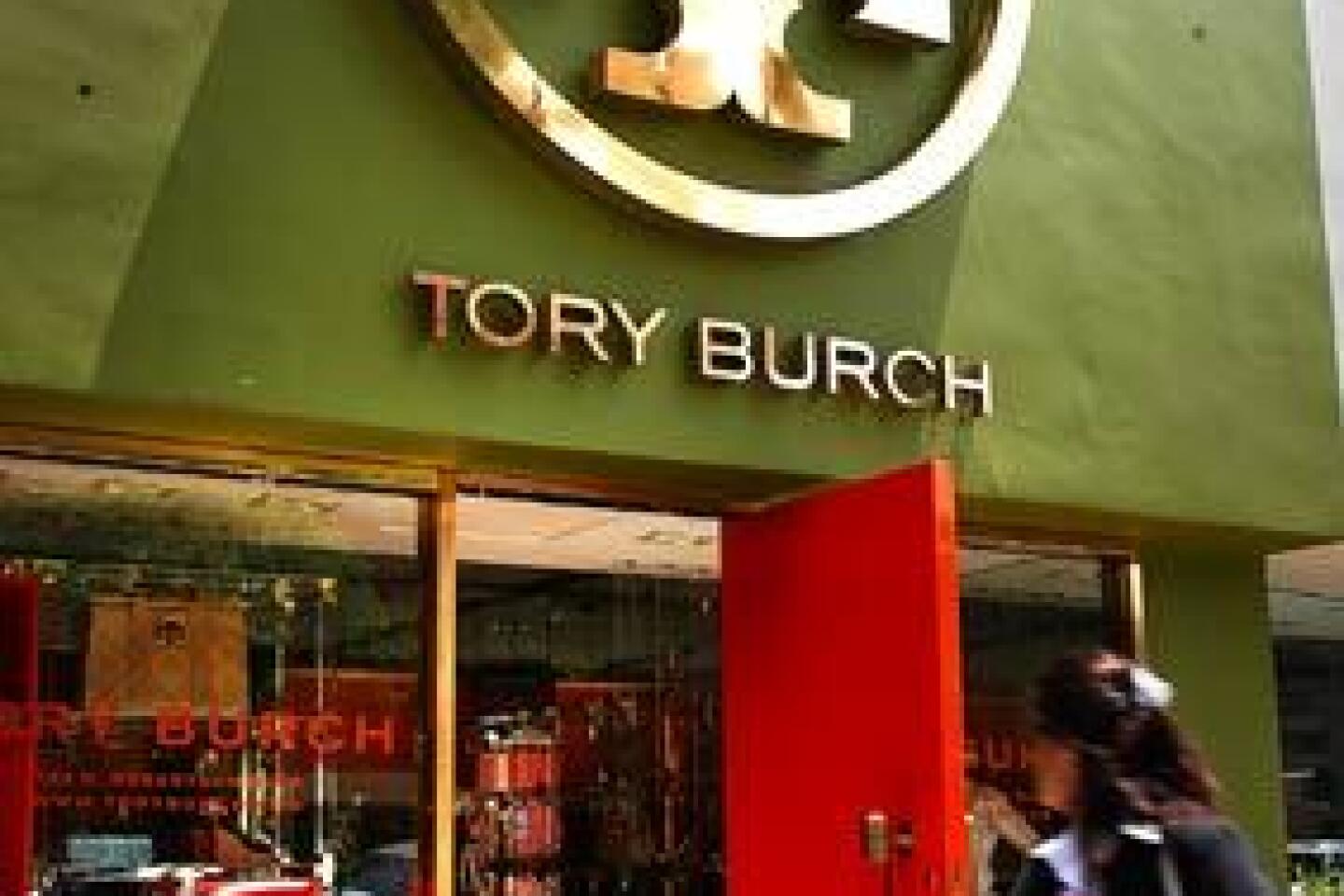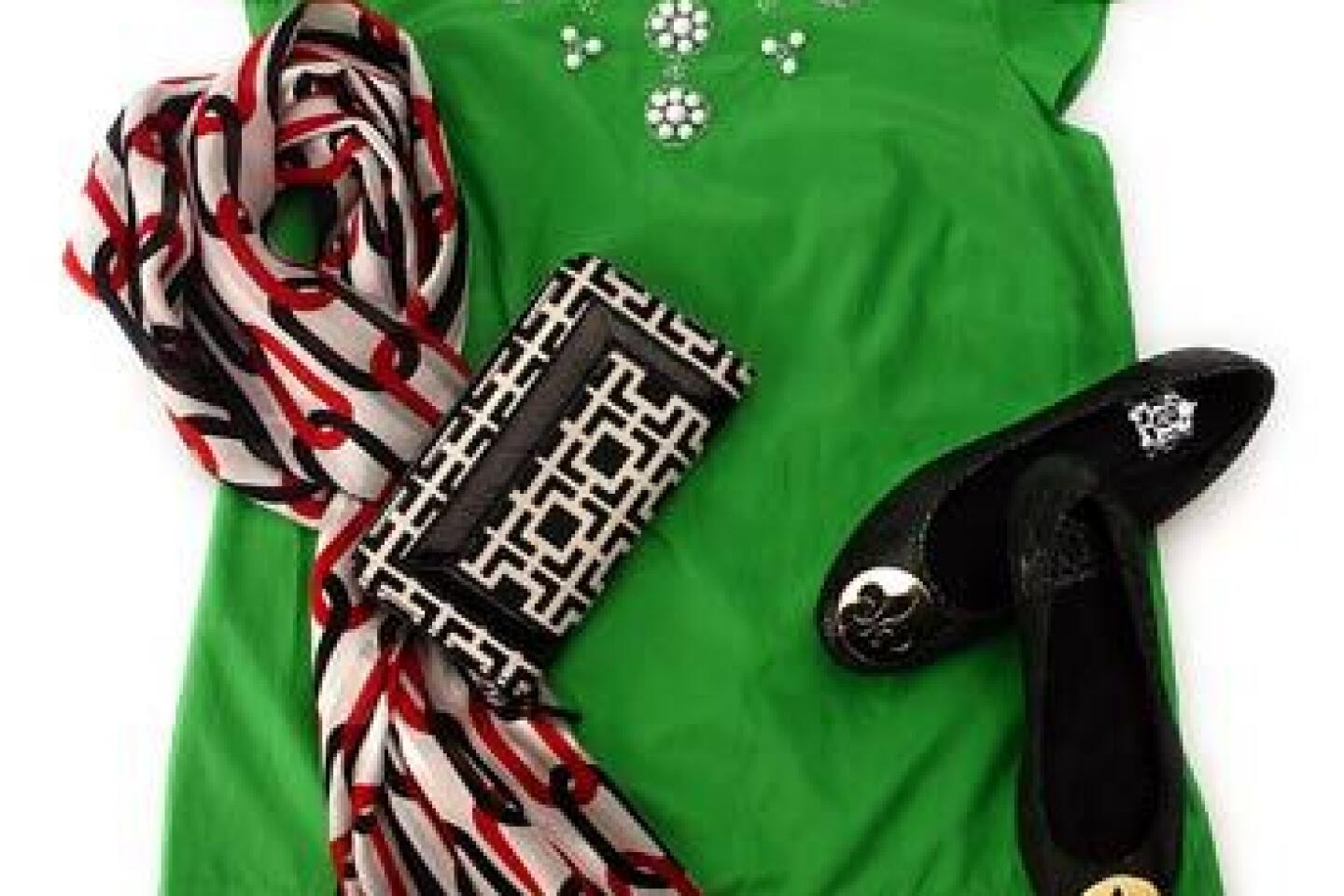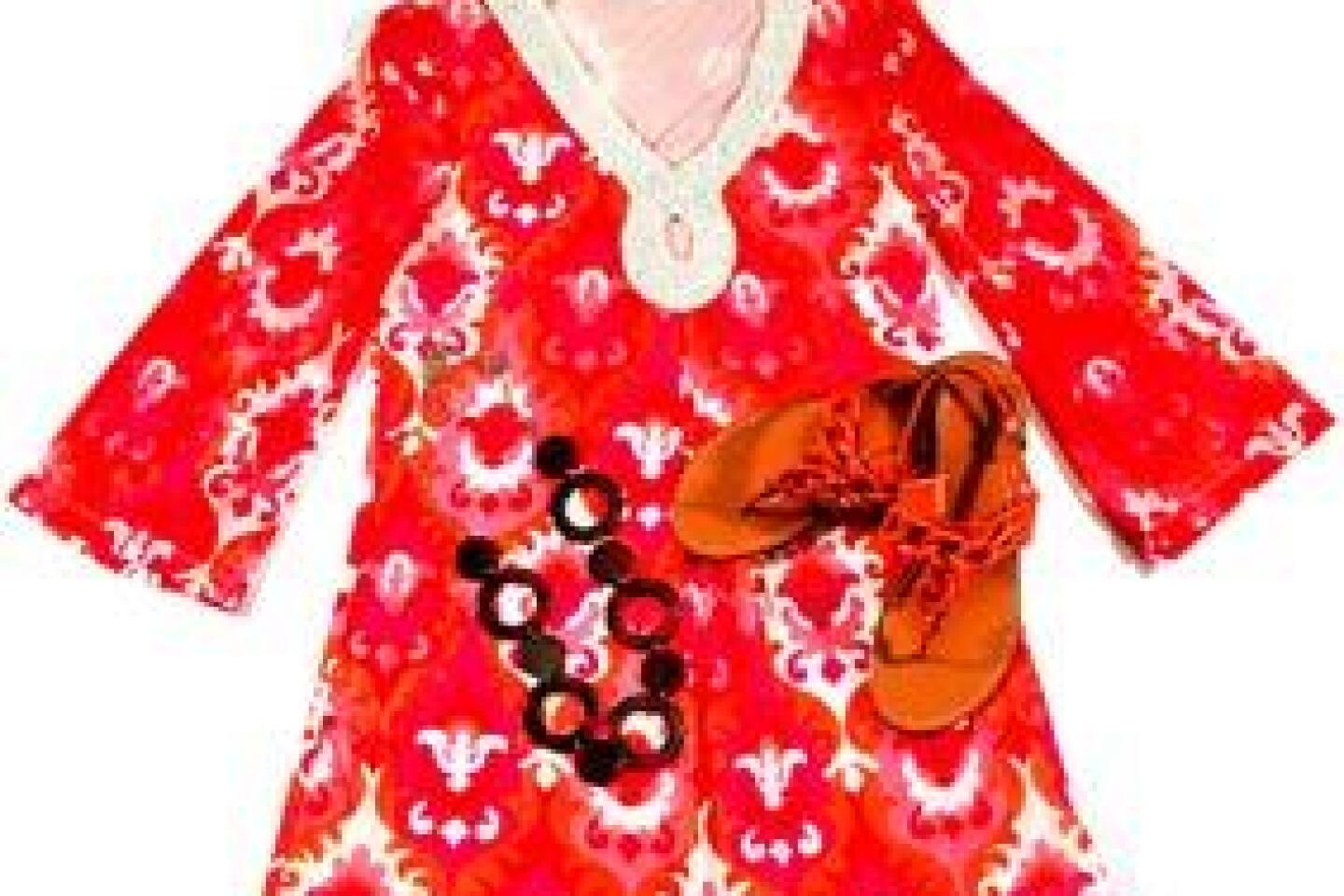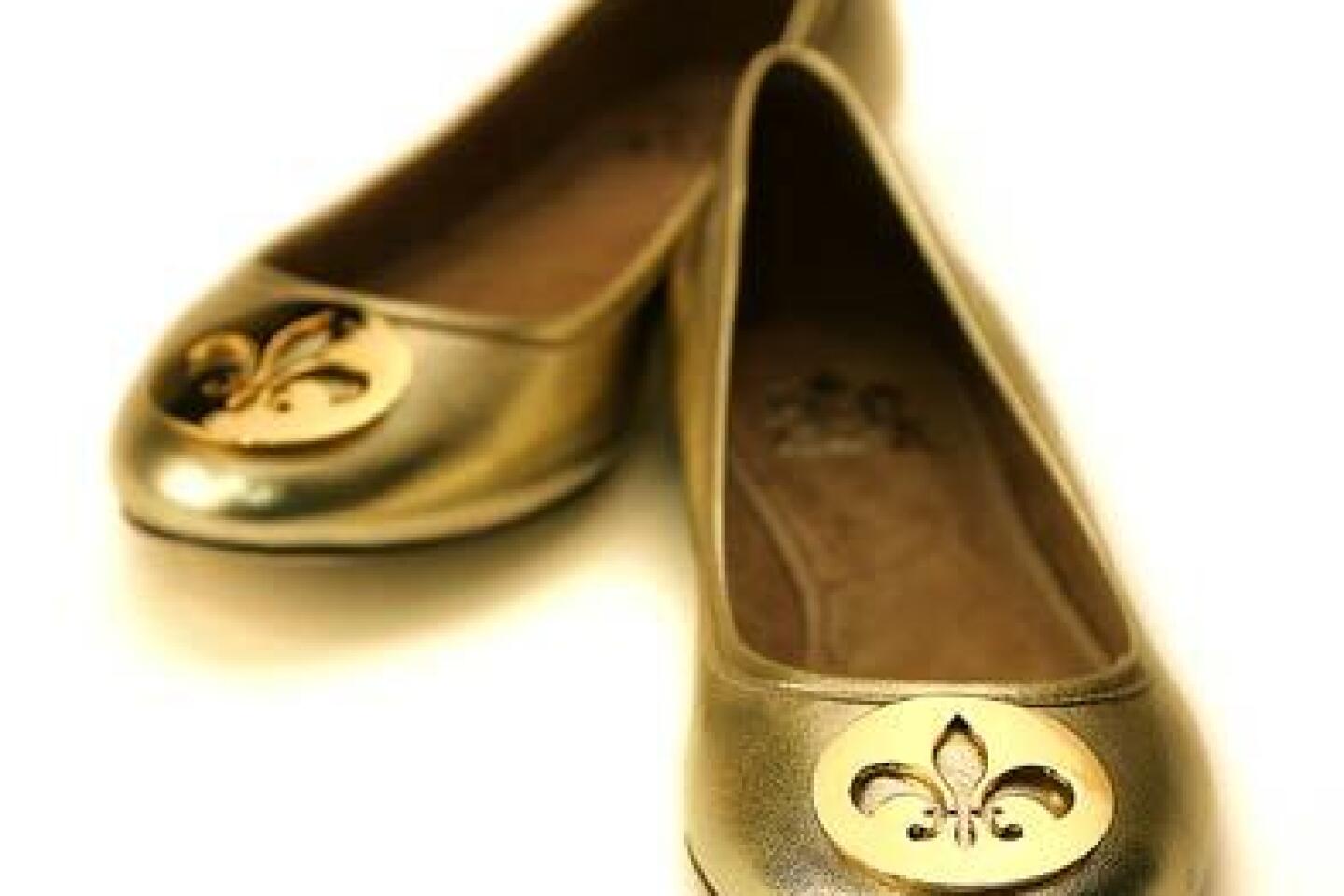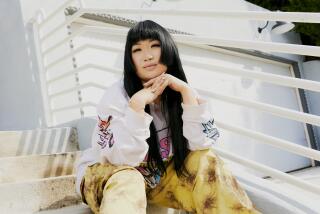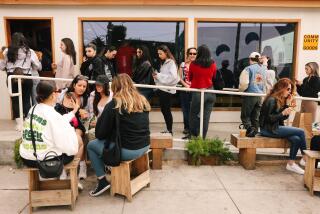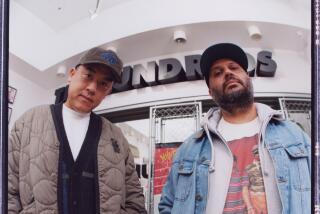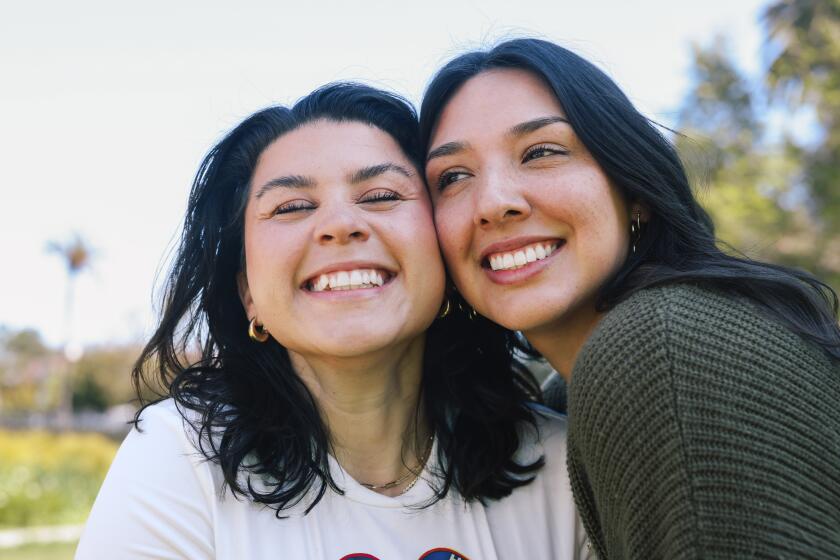Tory Burch has turned her line of classics into a must-have lifestyle brand
We started to notice it a few months ago -- the Palm Beachy printed clutches at Old Navy, the two-tone cardigans with jeweled buttons at J. Crew, the beaded tunics at Banana Republic, the indispensable flat shoe with a gold insignia on the toe at Target.
Tory Burch, or rather her WASPy 1960s and ‘70s David Hicks-meets-Marrakech style, is everywhere -- at the mall, on the runway, even at the Coachella music festival in April, where Prince wore a woman’s studded Tory tunic on stage. Burch herself is everywhere too -- on the cover of Town & Country, on society pages, in gossip columns, linked for a while to Lance Armstrong.
In just four years, she has become the most influential fashion designer in America. Unlike big names such as Lanvin and Balenciaga, who may score a lot of red carpet hits but are sustained mostly by accessory and fragrance sales, Burch designs clothes that real people really wear.
Her brand, with prices mostly in the $195 to $495 range, is accessible to a good range of ages and sizes (up to a size 14). For high-end shoppers, it’s a source for casual clothes; for budget shoppers, it’s aspirational. And for Burch, it’s raking in more than $200 million in annual sales.
What took Ralph Lauren decades -- developing brand signatures such as the Polo pony, Polo shirt, concho belt and blanket coat -- Burch has done in a handful of years. The tunic top, the sequin knit dress, the dickey sweater and the $195 Reva ballet flat named after her mom and adorned with the double-T logo have become classic designs, some of which are cleverly re-created as charms on a bracelet. (More than 300,000 pairs of Reva flats have been sold.)
When I spoke to Burch a year ago, she said she found the imitators flattering. But now, she’s not so sure. “I have called the heads of some companies personally and said, ‘We all are inspired by people, but when it’s so literal . . . ‘ “ the designer said over lunch in Beverly Hills. There’s even a wall of shame in the New York office, where the staff posts photos of rip-offs.
“Listen, I’m the first to say I’m inspired by Balenciaga and Lanvin, but I make it my own.”
Burch is poised and well-spoken, always perfectly turned out and ready to pose for a picture. She’s aware that her personality is key to the business, and as such, eager to prove she’s just like everyone else despite the fact that she rarely travels without a car and driver. She’s a no-b.s. type who is not prone to false flattery. But according to her friends, she’s incredibly conscientious about them and her three young boys.
Her trajectory was similar to that of Diane Von Furstenberg: Burch is a beautiful woman from a privileged background who landed in the social swirl of New York via the fashion business, working in the public relations departments at Ralph Lauren and Vera Wang.
She married a venture capitalist (the two have recently divorced but are on friendly terms and remain business partners). And with no design experience, investing her own money, she’s done what everyone in the industry aspires to do: She’s built a lifestyle brand, complete with logo-ed beach towels and 14 Daniel Romualdez-designed boutiques with their own midcentury modern look. (In Southern California, she has stores on Robertson Boulevard, in South Coast Plaza and at Fashion Valley in San Diego. A Malibu outpost will open next year.)
She launched her line in February 2004 at her own retail store in New York, before wholesaling it. She began with 15 categories, which is a lot for any business starting out. Many pieces, such as the caftans and espadrilles, were inspired by things that her parents wore when they vacationed in the 1960s in Morocco.
Her brand of stylish cheaper (if not cheap) chic came along at just the right time, when women were starting to take pride in mixing an H&M jacket with a Prada bag. “Having been in the fashion industry and seeing the markup, I didn’t want to spend a ton of money on clothes,” she says, wearing a navy blue shift dress from the spring collection and a carved ring by Turkish designer Sevan Bicakci.
“It’s great to have a few designer pieces, but I like mixing them with our things and things from the Gap. It’s more interesting,” she says.
The seminal moment came in March 2005 when Oprah Winfrey invited her onto the show. The media queen had received one of Burch’s tunics as a Christmas gift. The next day, Toryburch.com got 8 million hits.
“She’s not designing for some fictitious woman,” says Peter Nordstrom, executive vice president and president of merchandising for Nordstrom, where the line is sold in select stores. “She’s a woman of great style and taste and she’s speaking to her friends.”
Now, Burch is in expansion mode. She’s opened an office in Milan to begin selling overseas, and a fragrance is on the horizon (“I like coriander and tuberose and Vetiver by Guerlain,” she says.) With handbag sales up 50% and accessories sales up 200% last year, she’ll be unveiling more small leather goods and jewelry.
But she’s also standing at a precipice so visible and so imitated that she has to be careful not to fizzle out. (Kate Spade comes to mind.)
“I don’t see it as ‘Wow, we’re there,’ ” Burch says. “But we’re not trying to be something we’re not. We’re not trying to reinvent fashion or be esoteric. What I love best about what we’re doing is that we’re making women happy.”
She recently hired image guru Trey Laird, who has worked with the Gap, Nautica and Donna Karan, to “take us to the next level.” And she’s ready to overhaul the website and a few stores, including the one in L.A. (“It looks so worn.”) She’ll be doing more trunk shows and appearances, and a style book.
Because Burch is really her own best asset. Men fall in love with her and women do too. On the website, “Tory’s picks” regularly sell out. She’s an instant girlfriend, easy to talk to and eager to put people together. At lunch, she orders a Chinese chicken salad for herself and pad thai and French fries “for the table.”
And she gets excited about her own clothes the way a regular shopper would. “You have to get this sweater from the holiday collection,” she tells me. “It’s inspired by Lanvin, cashmere with a jeweled neck, and it retails for something like $295!” she says, sounding surprised herself.
“Women relate to me on many different levels. I’m a working mom and I’m getting a divorce. I think not having a perfect life is something they can relate to, and I’m very honest about it.”
She travels to L.A. regularly to see friends Elizabeth Wiatt, Jamie Tisch and Crystal Lourd, and was recently honored by a charity here.
“As beautiful as she is, she is funny; as chic as she is, she is smart,” Wiatt says. “And she’s an incredibly good mother. I’m insanely jealous of her.”
It’s easy to see why. Burch is spending July in a rented house in Italy, and August in Southampton. And in between, she’ll be working on the collection. (There are 11 deliveries a year.) Much of the designing is done on the computer, with Burch assembling mood boards and gathering old handkerchiefs and vintage pieces from flea markets and stores such as the Way We Wore in L.A. and giving them to her design team to translate.
For fall, there’s something for everyone: a new “Buddy” print fabric adapted from the monogram of Burch’s father Buddy, who died last year; a Hitchcockian bird-on-a-wire print; even a few bohemian tie-dye prints splashed on tunics that are now arriving in stores.
Burch has loved hippie chic since her younger years, when she was a kind of Dead Head lite who wore tie-dye T-shirts with Hermes scarves. Even back then she had a singular style, dubbed “Tory Wear” by her University of Pennsylvania friends.
It’s that instinct for personal style, for mixing and matching genres, eras and prints that Burch could market more, and that could propel her into the future. Right now, she’s got the goods but she needs the myth, something like Ralph Lauren’s Americana story, or Diane Von Furstenberg’s iconic working girl-in-a-wrap dress. If she can find that, four years could turn into 40 and Tory Burch could just be the next great American brand.
More to Read
Sign up for our L.A. Times Plants newsletter
At the start of each month, get a roundup of upcoming plant-related activities and events in Southern California, along with links to tips and articles you may have missed.
You may occasionally receive promotional content from the Los Angeles Times.
